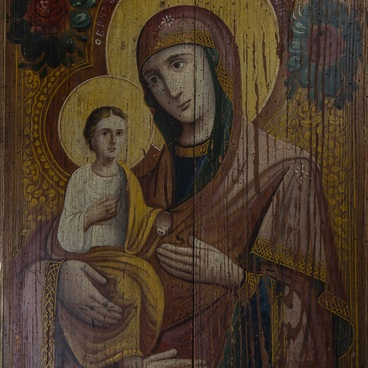In the olden times, people ironed clothes with a pre-heated fieldstone. In the 4th century BC, the Greeks pleated clothes with a hot metal rod. The Romans ironed their tunics using a metal hammer — cloth wrinkles were just beaten down.
Metal pans heated with coals or a special tool consisting of a grooved board and a roller were applied for smoothing cloth in Russia. Clothes were wound around a roller and spread flat with the grooved board.
Irons were first mentioned in 1636, in the Tsar’s court register. The first ironing items weighed up to ten kilograms.
A box iron dates back to the 18th century. The upper part could be folded back and live coals were put inside. There were vents on both sides. The vents were puffed into from time to time to keep the coals burning.
Later the heavy box cast irons and box spirit irons became available. Before their use, box cast irons were heated in an oven, and alcohol was inflamed inside box spirit irons. Big box cast irons were used for smoothing coarse fabrics. Half-a-palm-sized irons were applied for fine and delicate fabrics, as well as for small pieces, such as collars and cuffs.
The box cast irons became more affordable both for better-off and average peasants. A good while, the box spirit iron was considered a luxury item, which could be exchanged for a small herd of sheep or a cow.
In Pogar, the irons were used by tailors, whom the residents called “kravtsy” in the Ukrainian style. The tailors were divided into “thin” and “thick”.
The so-called thin craftsmen sewed sophisticated elegant clothes from thin fabrics, and the thick ones mainly made outerwear clothes from coarse materials. In winter, they went to a faraway village and worked there to fulfill all orders by the spring. In 1780, 55 Pogar tailors formed a craft guild. The craftsmen worked for charitable causes, doled out money for a church school and almshouse for the elderly and sick people.
The box iron, displayed in the Radogoshch Museum, was produced at the Slavyanin iron foundry in the city of Konsk of the Radom governorate in the early 20th century.
Metal pans heated with coals or a special tool consisting of a grooved board and a roller were applied for smoothing cloth in Russia. Clothes were wound around a roller and spread flat with the grooved board.
Irons were first mentioned in 1636, in the Tsar’s court register. The first ironing items weighed up to ten kilograms.
A box iron dates back to the 18th century. The upper part could be folded back and live coals were put inside. There were vents on both sides. The vents were puffed into from time to time to keep the coals burning.
Later the heavy box cast irons and box spirit irons became available. Before their use, box cast irons were heated in an oven, and alcohol was inflamed inside box spirit irons. Big box cast irons were used for smoothing coarse fabrics. Half-a-palm-sized irons were applied for fine and delicate fabrics, as well as for small pieces, such as collars and cuffs.
The box cast irons became more affordable both for better-off and average peasants. A good while, the box spirit iron was considered a luxury item, which could be exchanged for a small herd of sheep or a cow.
In Pogar, the irons were used by tailors, whom the residents called “kravtsy” in the Ukrainian style. The tailors were divided into “thin” and “thick”.
The so-called thin craftsmen sewed sophisticated elegant clothes from thin fabrics, and the thick ones mainly made outerwear clothes from coarse materials. In winter, they went to a faraway village and worked there to fulfill all orders by the spring. In 1780, 55 Pogar tailors formed a craft guild. The craftsmen worked for charitable causes, doled out money for a church school and almshouse for the elderly and sick people.
The box iron, displayed in the Radogoshch Museum, was produced at the Slavyanin iron foundry in the city of Konsk of the Radom governorate in the early 20th century.



